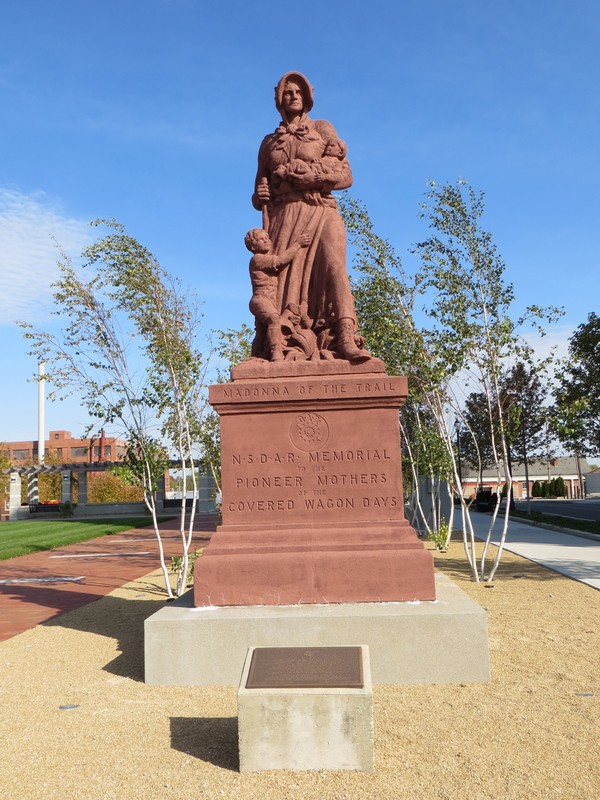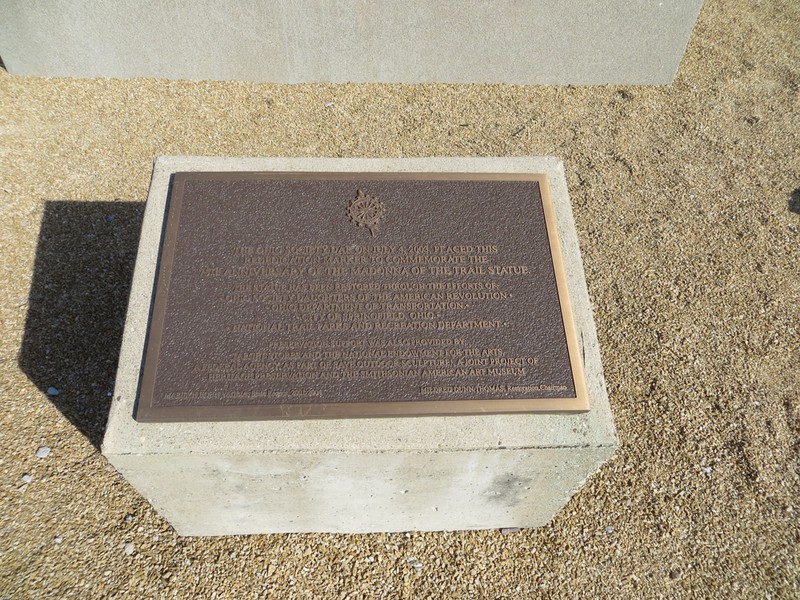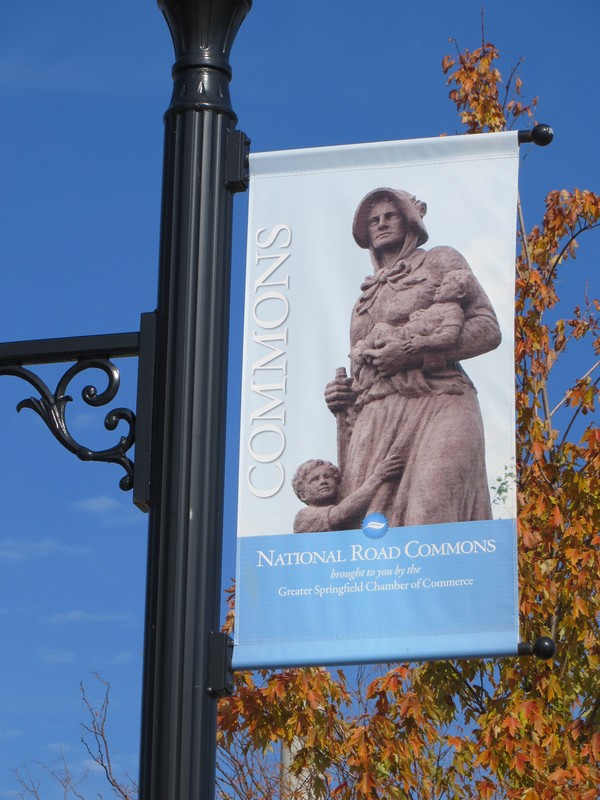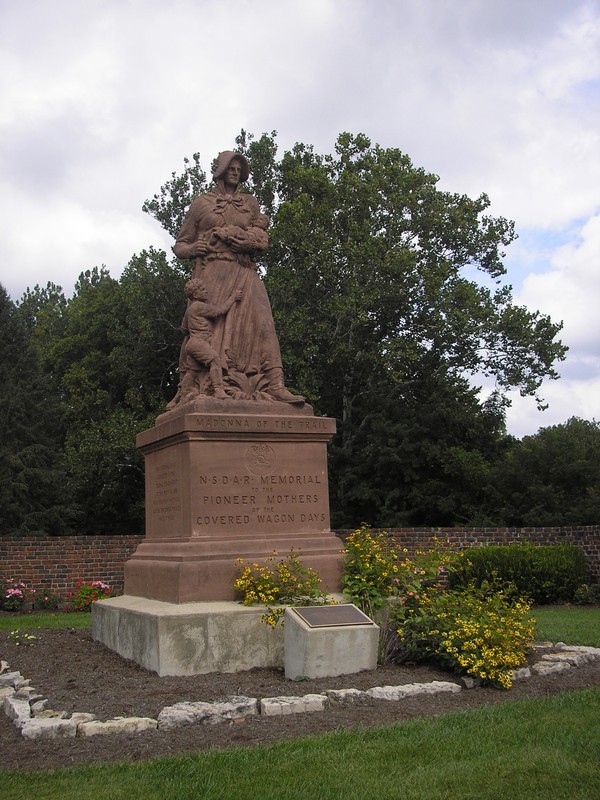Madonna of the Trail (Springfield, OH)
Introduction
Text-to-speech Audio
Images
Madonna of the Trail statue in 3rd location (2011-present): National Road Commons, Springfield, Ohio, 2012

Rededication marker

Madonna of the Trail featured on National Road Commons banner

Madonna of the Trail statue in 2nd location (1956-2011): Snyder Park, Springfield, Ohio, 2009

Backstory and Context
Text-to-speech Audio
In 1911 the National Society, Daughters of the American Revolution (DAR) set out to mark the “Old Trails Road” stretching from Maryland to California. Initial plans called for painted mileage markers throughout the route. Those plans were later abandoned in favor of pioneer mother statues.
National DAR Commission chairperson Arlene B. Nichols Moss was inspired by Portland, Oregon’s 1905 Sacajawea monument to commission Madonna of the Trail statues to be placed in the 12 states through which the “Old Trails Road” passed. Sculptor August Leimbach envisioned a scene in which she is looking for her husband whom she believes to be in danger. Like other Pioneer Mother statues erected during the late 1920s, the 12 DAR statues balanced strong, active roles for women with softer maternal symbolism.
One Madonna of the Trail statue was erected in each of the states through which the National Old Trails Road passed. The statues were cast from algonite (a form of cast stone produced from a mixture of crushed marble, Missouri granite, stone, cement and lead ore) at the cost of $1,000 per statue. The statues were placed along key white migration routes, such as the early-19th-century National Road (later U.S. Route 40) and Santa Fe Trail (later the infamous Route 66). But the precise location of the monument within each state was selected based on both the site’s historical significance and the influence of local DAR chapters.
The Springfield, Ohio, location was chosen to emphasize the importance of the old National Road (later U.S. Route 40), which was built between 1811 and 1834 to connect trans-Appalachian settlements to the eastern United States. The toll road reached from Cumberland, Maryland, to the Ohio River. Text on its base also highlights General George Rogers Clark’s nearby defeat of the Shawnee Confederacy in 1780, which helped open the Northwest Territory to white settlement.
Nearly a century has passed since these statues were first erected across the United States. The Springfield, Ohio, Madonna has been moved twice. In 1956 the statue was moved aside 1/4 mile to make space for a new highway interchange. Then in 2011 it was moved again, this time 2 miles east into the city center, where it became the centerpiece of a new downtown connector park, National Road Commons.Sources
Bauer, Fern Ioula. The Historic Treasure Chest of the Madonna of the Trail. Springfield, Ohio. J. McEnaney Printing, 1984.
Daughters of the American Revolution. Twenty-Second Report of the National Society of the Daughters of the American Revolution: March 1, 1918, to March 1, 1919. US Government Printing Office, 1921.
Peters, Helen. "Madonna of the Trail." New Mexico Magazine. December 1993.
